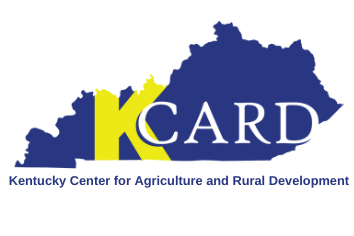We’re often asked by farmers and agribusinesses how to apply for federal grant programs. While these grant programs can be a good option for growing agribusinesses to obtain capital, it’s important to understand how much work goes into receiving a grant, even beyond the application itself. Often, applying for federal grants requires 40 to 80 hours of work. Check out these four tips to help prepare you for applying for a federal grant program.
Complete the required registrations.
If you are planning to apply for a federal grant program, it is necessary to complete several registration processes. You will need to register at Systems for Awards Management (SAM.gov) for a Unique Entity Identifier (UEI) number and a CAGE code. Depending on the program that you are applying for, you might also have to register with Grants.gov and the Kentucky E-Clearinghouse. These registrations are free, but they can take time to complete and receive approval. Make sure you are on the official SAM.gov website, because there are copycat sites that will eventually charge a fee. It’s best to start this process as soon as possible so you can be prepared when completing the grant application.
For step-by-step directions and estimated timelines, check out our Getting Registered for Federal Grants page.
Understand what the match requirement is.
Many grants require some form of matching funds from the grantee. Match can be in the form of cash on-hand, including funds currently in the bank or an existing line of credit, but match can also sometimes be in-kind or non-monetary contributions to the project, such as labor or inputs, such as milk for a value-added dairy project. The percentage of match required and types of match accepted vary by grant, so be sure to do research to understand what your contribution will need to be.
Submit all forms and sections.
Generally, grant applications will at least consist of the actual application narrative, a budget, and federal forms. Sometimes, additional information is required, such as a business plan, letters of support, etc. Failure to submit any of the required sections or supporting document will result in your application being delayed or even deemed ineligible. The webpage for the grant, whether on the agency’s website or grants.gov, will have a list of required documents and often an application toolkit that will walk you through the required sections of the application with links to any external forms required. Be sure to download the documents along with the appropriate software to work with them, such as Adobe Acrobat reader, and save your work often so you don’t lose any of your progress!
Get ready for reporting paperwork!
Once you’ve been approved for the grant... it’s time for paperwork! You’ll need to report on the progress of the project, so the funder can see if the project will be completed in the approved timeline. Also, it is important that you have an organized recordkeeping system because you’ll need to keep up with relevant receipts and expenses and submit those for reimbursement.
KCARD offers assistance with recordkeeping and funding through our Agribusiness Grant Facilitation Program. If you’d like to talk about funding opportunities or get help applying for a specific grant, feel free to contact us at kcard@kcard.info or (859) 550-3972.

